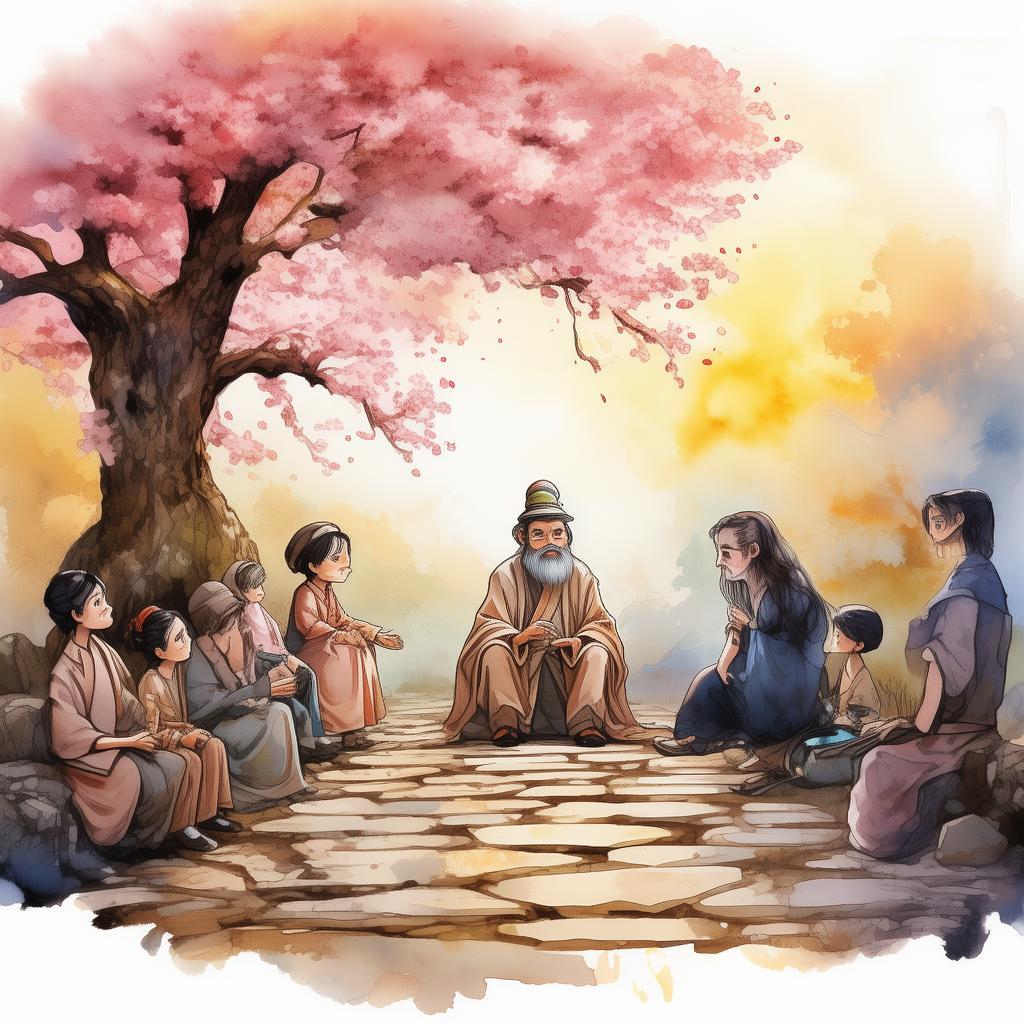False Colors: The Labyrinth of Deceit
In the bustling city of Lumina, where the sun set like a golden coin, there lived an artist named Elara. Her paintings were as vibrant and lifeless as the colors she mixed. She was known for her ability to capture the essence of the unseen, the emotions that lay hidden beneath the surface of everyday life. But Elara was no ordinary artist; she was a chameleon, a creature of transformation, whose true form was a secret she guarded fiercely.
One day, a mysterious patron approached Elara with an offer she couldn't refuse. The patron, a wealthy and influential figure in Lumina, desired a painting that would reflect the beauty of transformation itself. Elara, intrigued by the challenge, agreed to the task. Little did she know that this commission would lead her down a path of deceit and moral ambiguity.
The patron provided Elara with a labyrinth, a place of endless twists and turns, where the walls seemed to shift and change with every step. Elara spent days and nights within the labyrinth, searching for inspiration. She began to notice strange occurrences; shadows seemed to dance around her, and whispers filled the air. She felt as though she were being watched, but by whom, she could not say.
As Elara worked, she painted the labyrinth with every hue and shade she could imagine. The painting became a reflection of her own inner turmoil, the struggle between her desire to please the patron and her own sense of integrity. She painted the walls with colors that seemed to shift and change, mirroring the labyrinth's unpredictable nature.
One night, as Elara worked late into the night, she felt a presence behind her. She turned to see a figure standing in the doorway, a figure that seemed to be made of the very colors she had painted. It was the patron, but this was no ordinary patron. This was the chameleon, the true mastermind behind the labyrinth.

"Elara," the chameleon's voice was smooth and soothing, "your painting is exquisite. It captures the essence of transformation. But there is one thing you have yet to understand."
Elara's heart raced. "What is that, master?"
The chameleon stepped closer, his eyes glinting with a mixture of admiration and malice. "Transformation is not just about changing appearance. It is about changing the soul. And you, Elara, have changed your soul."
Elara's mind raced. She had been so focused on the painting that she had forgotten about the impact it was having on her. She had become a chameleon, not just in her art but in her very being.
"I must have," she whispered, her voice filled with self-doubt. "But I didn't mean to."
The chameleon smiled, a chilling smile that did not reach his eyes. "You are the chameleon, Elara. You are the one who can transform, who can become whatever you choose to be. But remember, with great power comes great responsibility."
Elara's world shattered. She realized that the chameleon was not just a patron; he was a guide, a mentor, and a warning. She had become a chameleon, but had she become a creature of deceit?
The next morning, Elara returned to the labyrinth, not as an artist, but as a chameleon. She walked the walls, her footsteps silent and unseen. She painted the labyrinth with her own emotions, her own fears, and her own truths. She painted the labyrinth as it truly was, a place of transformation, but also a place of deceit.
And as she painted, she understood. The chameleon had not been a threat, but a guide. He had shown her the true nature of transformation, the moral dilemmas that came with it, and the power to change not just her appearance, but her soul.
Elara emerged from the labyrinth, her painting complete. It was a painting of the labyrinth, but it was also a painting of herself. She had become the chameleon, but she had also become the artist, the one who could see beyond the surface, the one who could transform her soul.
And as she held the painting, she knew that she had learned a valuable lesson. The chameleon's charm was not just a tale of false transformation; it was a tale of truth, of the power of change, and the responsibility that comes with it.
Elara's painting became famous, not just for its beauty, but for its message. It became a symbol of the struggle between appearance and truth, between change and integrity. And Elara, the chameleon artist, became a legend in her own right, a reminder that transformation is not just about changing the outside, but about changing the inside as well.
✨ Original Statement ✨
All articles published on this website (including but not limited to text, images, videos, and other content) are original or authorized for reposting and are protected by relevant laws. Without the explicit written permission of this website, no individual or organization may copy, modify, repost, or use the content for commercial purposes.
If you need to quote or cooperate, please contact this site for authorization. We reserve the right to pursue legal responsibility for any unauthorized use.
Hereby declared.









